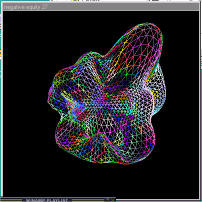graphics card: as far as negative equity goes, the most important component of your computer is its graphics card. that, coupled with the completeness and optimality of your graphics card driver's OpenGL ICD implementation will, more than anything, govern the framerate that this plugin achieves. any card by nVidia is likely to be a good bet. any ATI Rage chipset card is likewise probably going to be fine, though not generally as fast. other cards with full ICDs should be fine. if you have a powerful computer, but aren't achieving framerates in the 50+ region, the likelihood is good that your graphics drivers are rendering OpenGL in software. other bits: negative equity is relatively light on required CPU, infact any reasonable pentium2 or equivalent should be capable of running it at a respectable framerate whilst leaving enough CPU for the machine to perform other tasks usefully. likewise, it's RAM requirements are minimal. expected performance: a pentium2-450 with an ageing nVidia TNT can run negative equity at between 75 and 100fps. a pentium3-600 with a GeForce DDR can consistently run it at over 100fps. negative equity looks best at framerates over 50, and ideally, over 75. if you have a halfway modern PC, this should be easily attainable. some technical stuff: the spherical approximation is a tesselated icosahedron with several thousand individual vertices, defining a few thousand more individual triangles. because of this relatively large geometry set, performance is particularly enhanced by your PC's OpenGL ICD supporting the optional compiled_vertex_array extension so that it doesn't have to recalculate geometry for where each of either 5 or 6 triangles share the same vertex. nVidia drivers, in particular, do this very well. bonus. the colour propagation rules bear a remarkable similarity to several simple forms of cellular automata, and if they had the right number of neighbours, rest assured, a version of John Conway's Life would've been implemented. as it is, there are several propagation rulesets that are close. the direction of the fireflies motion is pseudorandom, however, when the plugin decides a 'beat' has been triggered in one of the frequency bands it has demarkated, it gives the respective swarm of fireflies a kick, causing them to change direction and colour, and become a little more agitated (fast and big) for a short period of time.  |


